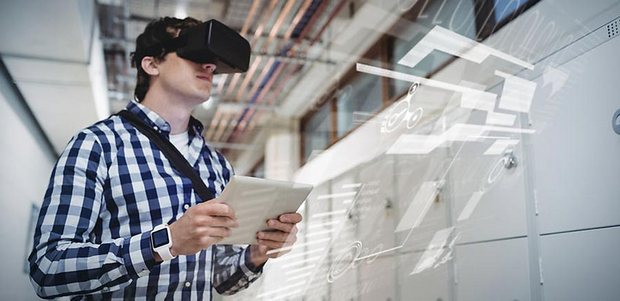Teaching refrigeration safety with VR

Students at South Australian training provider TAFE SA now have access to virtual reality headsets as a teaching aid to identify refrigeration safety risks and hazards.
Students studying certificate III in air conditioning and refrigeration at TAFE SA’s Tonsley Campus are among the first in Australia to trial the new Lenovo Mirage Solo virtual reality (VR) headsets in an educational setting.
TAFE SA has teamed up with Adelaide-based company Lateral Vision to create the virtual tours and environments that students will use as part of their training.
Electrical lecturer Shannon Baldock said TAFE SA would undertake a pilot programme with the new headsets and, if successful, would aim to have a pair for an entire class by the end of the year.
“We have developed virtual reality content that will allow students to respond as if they were on an actual live job site,” Shannon said.
“The refrigeration industry is going through a bit of a shift in terms of using new refrigerants/gases that are more environmentally friendly, so these headsets will give students the opportunity to learn about them and identify safety risks and hazards in the safety of a classroom learning environment.
“Students will be able to have access to plant equipment and areas that we currently cannot take them due to restrictions around safety and ease of access.”
The pilot will include three refrigerant safety courses, including a CO2 refrigeration plant running in a new supermarket, an ammonia plant running at an ice factory and flammable refrigerants.
Lateral Vision director Alex Tolson has been working closely with Shannon to find and develop innovative solutions to the limitations and complexities of training students to work safely with these materials.
“Virtual reality will allow students to gain an extra level of experience by visiting and engaging with sites which would otherwise be off-limits to most trainees,” Alex said.
“We use a special 360º camera that records stereoscopic imagery – when students view the content in a VR headset they are able to see things as if they were there.
“Using stereoscopic imagery gives the viewer depth to what they are looking at, giving them a better representation of the size of the machinery and equipment.”
Lenovo MD Matt Codrington said: “Seeing VR deliver outcomes in learning is exciting and being able to put people in a virtual environment to provide better perspective and access to instances that would normally be out of reach is just one of the areas where we feel has real benefits”.
“With Mirage Solo being the first of its kind being an all-in-one with Google Daydream and World Sense we can’t wait to see how TAFE SA staff and students leverage our technology,” he said.
He said there were opportunities to allow students from other TAFE SA campuses equipped with VR headsets to connect with scheduled class delivery at the Tonsley Campus.
“We could live stream a 360º video of in-class delivery and students could view in VR and be part of the classroom discussion,” he said.
“This would be of particular benefit to refrigeration as we have students that travel to Tonsley from all over the state.
“I envisage the pilot being rolled out to other trade courses at TAFE SA as staff become more familiar with the technology. In the long-term we would expect that the use of VR in the classroom will be as common place as the use of laptops.”
